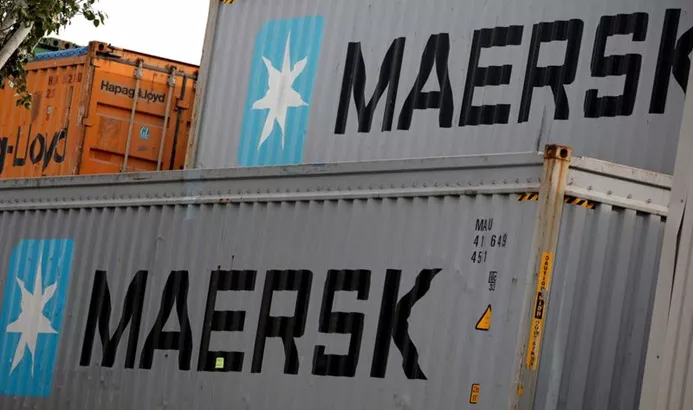Global shipping giant Maersk reported on Thursday that container volumes between China and the United States dropped by 30% to 40% in April, as trade tensions between the two countries escalated. The company warned that if the dispute continues, global container demand could fall this year.
Despite the downturn, Maersk is sticking to its full-year profit forecast. The company is benefiting from higher freight rates caused by ongoing disruptions in the Red Sea, where ships are being rerouted due to regional conflict.
U.S. tariffs introduced by President Donald Trump have caused companies around the world to lower sales expectations and revise growth forecasts, which has reduced the demand for sea freight.
Maersk, widely seen as a key indicator of global trade, now expects global container volumes in 2025 to range from a 1% decline to 4% growth. Earlier this year, it had projected a 4% increase.
“Volumes between China and the U.S. fell sharply in April due to the tariffs,” said CEO Vincent Clerc. “We managed to shift some of that volume to other markets where demand remains strong.”
Earlier in the year, many firms rushed to export goods to the U.S. before tariffs took effect. But economists say the trade war is now acting as a drag on global demand.
Maersk said there might be growth in the second quarter if companies use a 90-day pause in planned U.S. tariffs to build inventories. However, it also warned of a possible slowdown later this year if the tariffs stay in place.
With major customers like Walmart, Target, and Nike, Maersk is feeling the broader impact of the trade dispute. Clerc also raised concerns about the U.S. labor market, saying domestic production faces challenges.
“The idea of producing everything locally is not realistic,” Clerc said. “With historic low unemployment and mass deportations, who will fill the labor gap? If we rely solely on U.S. labor, even a T-shirt could cost $150.”
Maersk recently reduced ship capacity on China-U.S. routes. Its German competitor, Hapag-Lloyd, also said that 30% of its U.S.-bound shipments from China were canceled last month.
Maersk shares rose 0.6% by 1004 GMT.
Maersk continues to expect earnings before interest, taxes, depreciation, and amortization (EBITDA) of $6 billion to $9 billion for the year. Analysts at JP Morgan were surprised the company maintained this outlook.
The Red Sea remains a key factor in Maersk’s profitability. Despite recent U.S. statements about halting military action against Yemen’s Houthi rebels, Maersk expects disruptions to persist throughout the year.
The rerouting of ships around Africa, caused by Houthi attacks on vessels in the Red Sea, has lengthened travel times and driven up freight rates. Although former President Trump said the Houthis had agreed to stop attacking U.S. ships, the group later said the truce did not extend to Israeli-linked vessels.
No Red Sea shipping attacks have been reported since January, but Maersk and its competitors continue to take precautions.
In the first quarter, Maersk’s EBITDA surged 70% year-on-year to $2.71 billion, beating analyst expectations of $2.41 billion.
Related topics:


